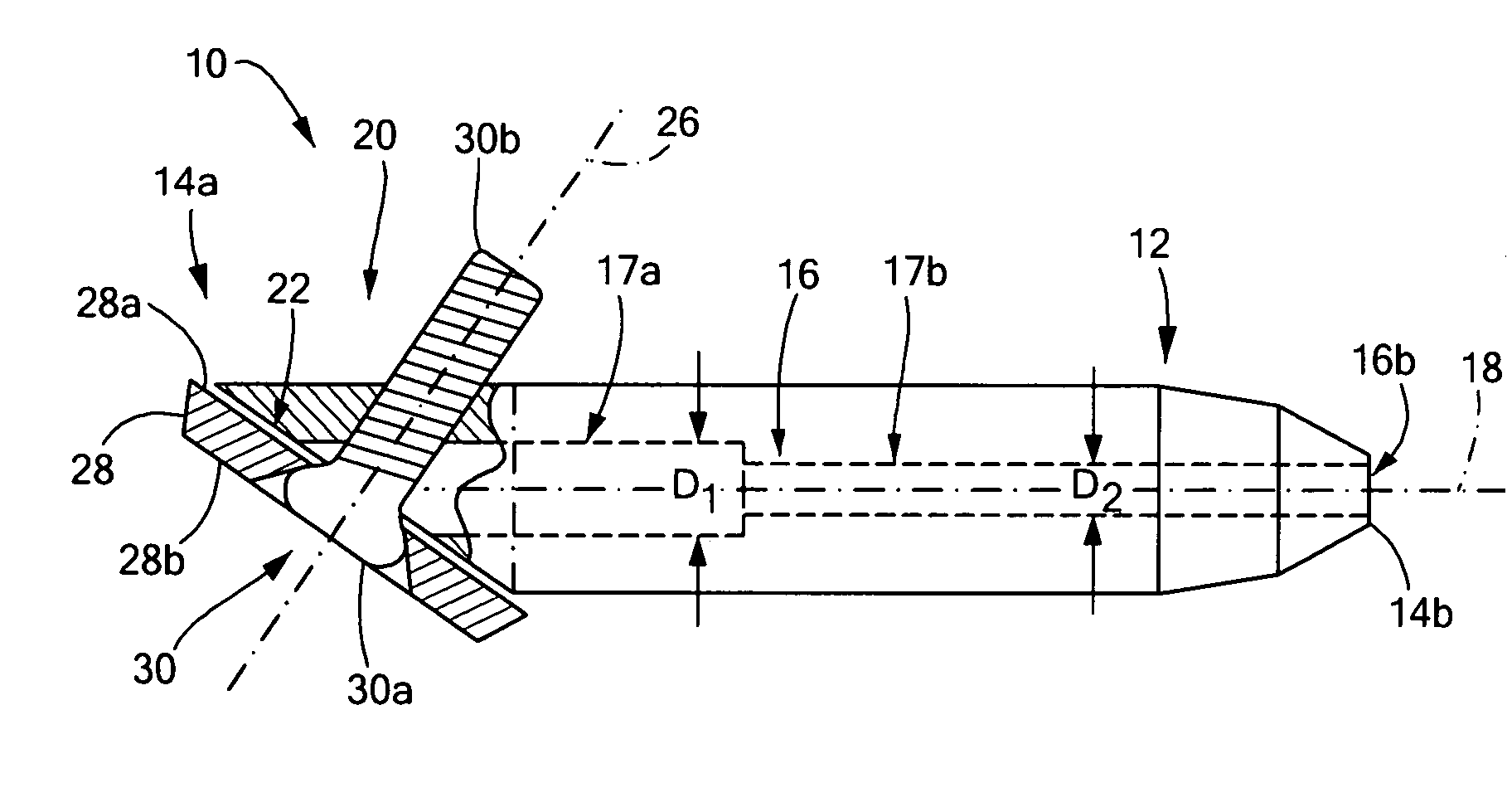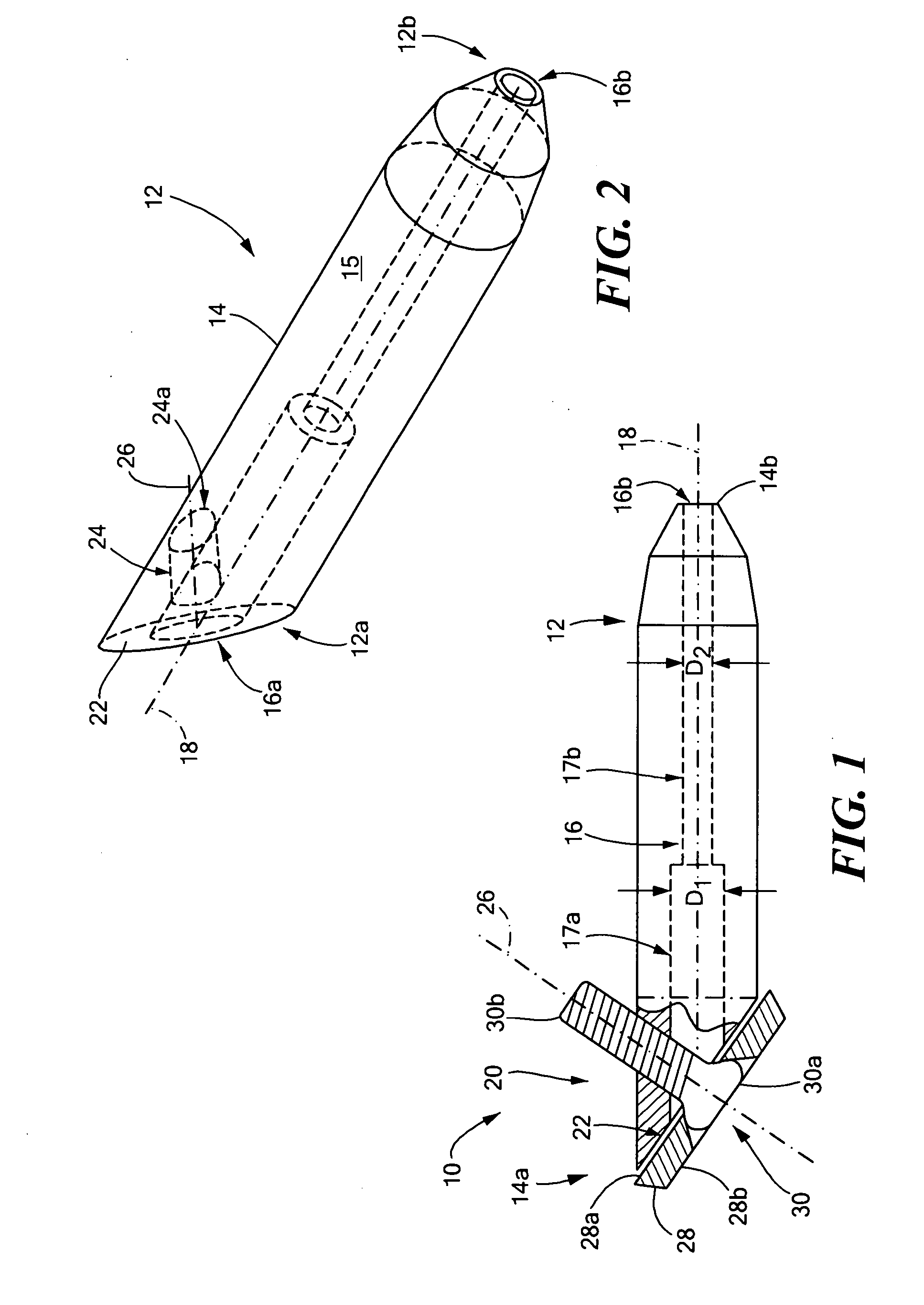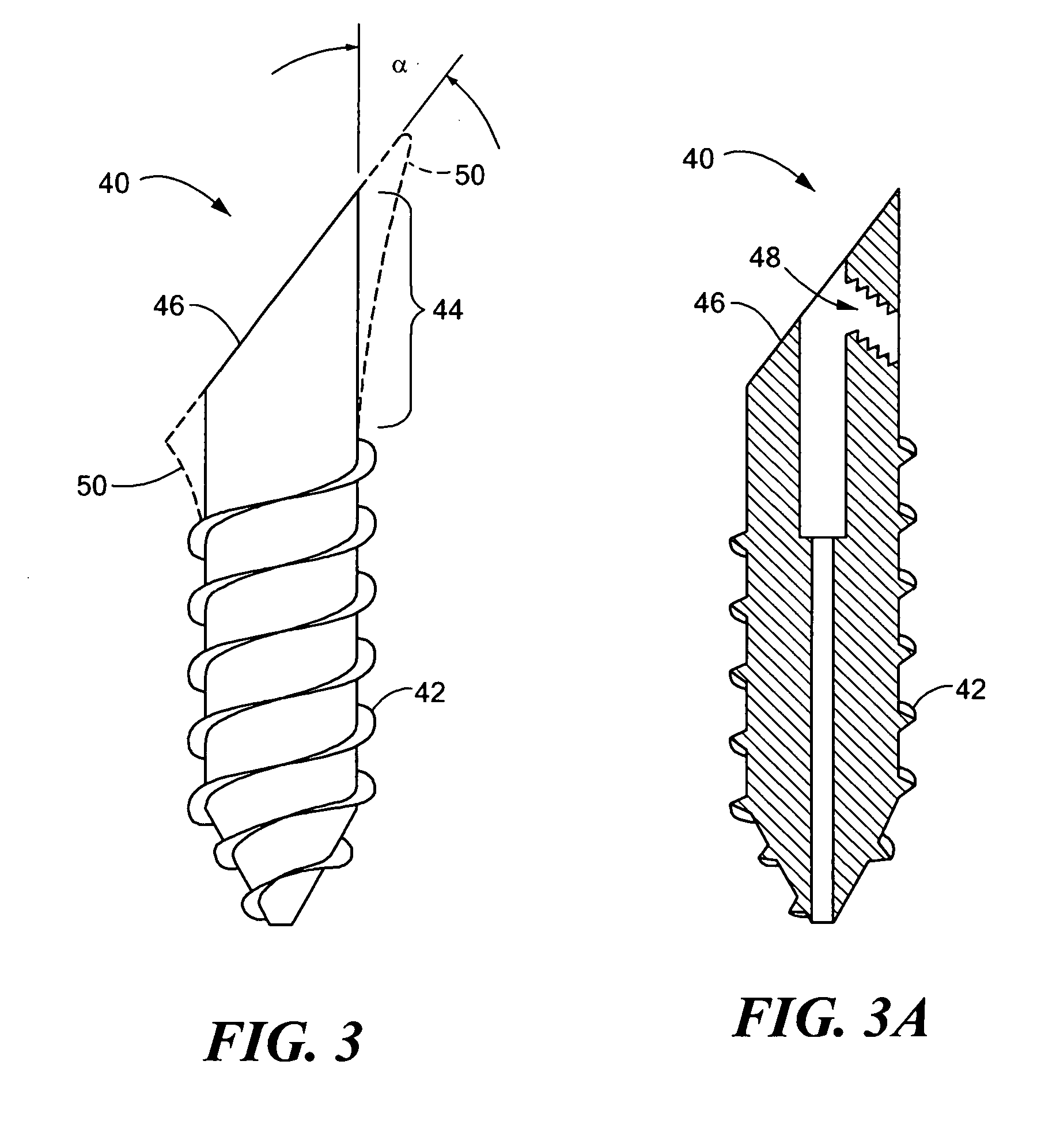Graft anchor
a technology for securing tendons and tendons, applied in the field of medical devices, can solve the problems of tibial graft fixation, surgical failure, slippage of graft past the interference screw, etc., and achieve the effect of preventing graft migration, facilitating grouping of ends, and increasing volum
- Summary
- Abstract
- Description
- Claims
- Application Information
AI Technical Summary
Benefits of technology
Problems solved by technology
Method used
Image
Examples
Embodiment Construction
[0027] Before describing exemplary embodiments of graft anchors and elements thereof as shown in FIGS. 1-6, it should be appreciated that description herein below is of exemplary embodiments only and is not intended to limit the scope, applicability or configuration of the claimed invention in any way. Rather, the following description provides a convenient illustration for implementing exemplary embodiments of the invention. Various changes to the described embodiments may be made in the function and arrangement of the elements described without departing from the spirit and scope of the invention as set forth in the appended claims.
[0028] It should also be appreciated that reference is made herein to “graft ligaments” or more simply “grafts” and that for the purposes of the present invention it should be understood that reference herein to “grafts” includes but is not limited to a ligament or tendon which is harvested from elsewhere in a patient (or from outside the patient) as w...
PUM
 Login to View More
Login to View More Abstract
Description
Claims
Application Information
 Login to View More
Login to View More - R&D
- Intellectual Property
- Life Sciences
- Materials
- Tech Scout
- Unparalleled Data Quality
- Higher Quality Content
- 60% Fewer Hallucinations
Browse by: Latest US Patents, China's latest patents, Technical Efficacy Thesaurus, Application Domain, Technology Topic, Popular Technical Reports.
© 2025 PatSnap. All rights reserved.Legal|Privacy policy|Modern Slavery Act Transparency Statement|Sitemap|About US| Contact US: help@patsnap.com



